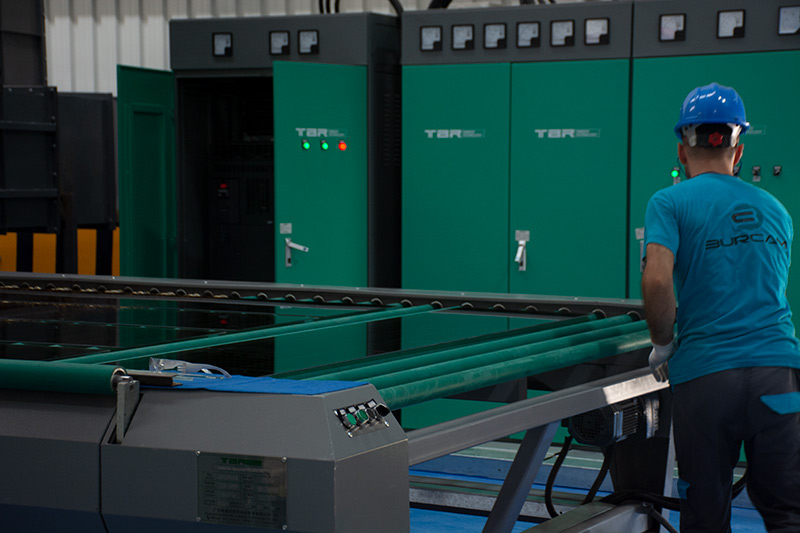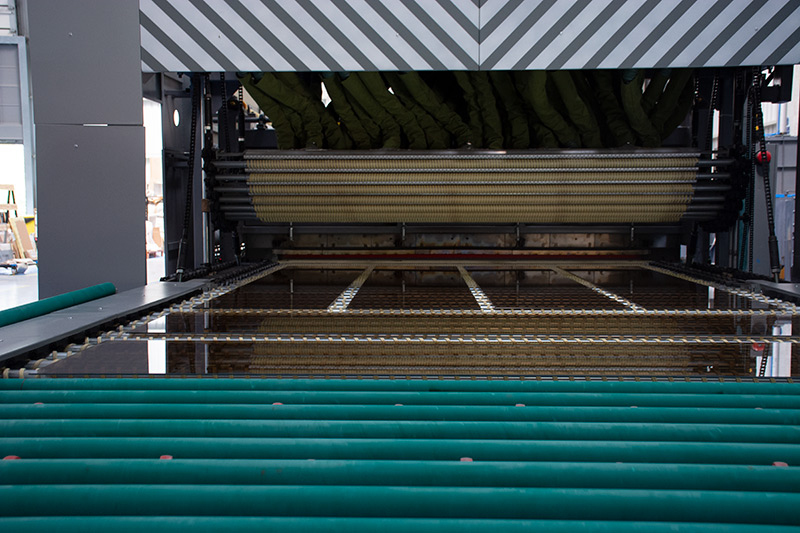TEMPERING PROCESS
Tempered glass, also known as reinforced glass or safety glass, is more resistant to breakage than normal glass. The tempering process is to bring the glass to temperatures between 600°C and 650°C with special heating systems for this process and then cool it suddenly with air.
As a result of the tempering process, compressive stress is imparted to the outer surfaces of the glass, and an indirect tensile stress (tension) is imparted to the middle of the glass. Thus, the glass becomes resistant to shrinkage and impacts.
Normal glass may break into sharp particles after breaking and cause injuries. Tempered glass breaks into small, blunt pieces when broken. Therefore, the risk of injury is minimized. Tempered glass is approximately 5 times more durable than normal glass of equal thickness. Its heat resistance is also higher than normal glass.





